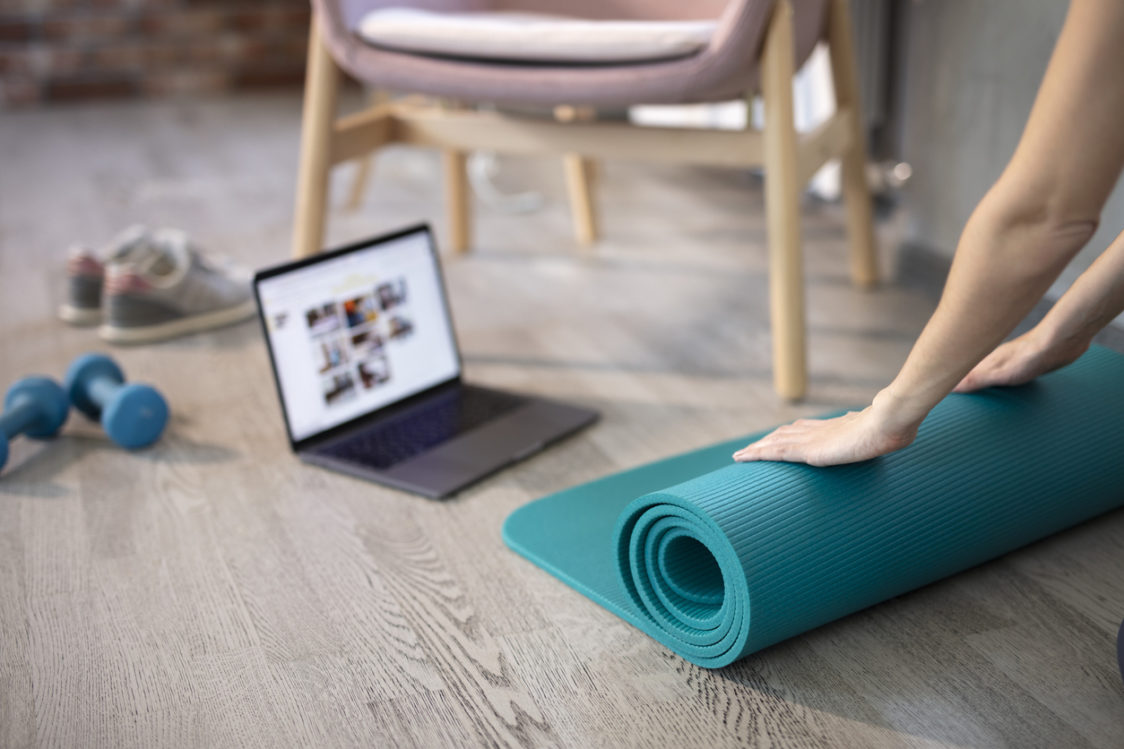Table of Contents
Have you ever thought about what all successful people have in common? And I’m not just talking about fame and money. I mean success on any level. It doesn’t matter if these people are building their own business, singing, painting, growing their careers at work or doing well in achieving their exercise goals. The key to keep moving in the right direction is consistency, habits or you can call it a routine. They have managed to build something that allows them to regularly engage in a certain activity in which they grow naturally, move forward and achieve their dreams.
Consistency is always going to beat intensity and often talent. It is this characteristic that we will take a closer look at today and at the same time bring you effective tips. They will help you create habits that pave the way for success.
What exactly is a habit?
One of the main pillars of success – habit, is actually a pattern of behaviour that we perform repeatedly and consistently. If you think about it, you will most likely find that you have dozens of them in your life. However, you have been practising them for so long that you subconsciously do them automatically and don’t pay any extra attention to them. It can be, for example, brushing teeth, regular breakfast, going to work, school or driving. It’s something you do automatically and without thinking.
You don’t have to think about how many moves you have to make when you want to drive a car. Your brain does not focus on the need to find and pick up the keys, put on your shoes, open doors, sit down, start the engine, etc. In short, it will do so without thinking, and the only way to achieve this is that you have done so often and regularly that it has become automated. The habit could also be applied to working out, studying or other areas in your life. [1 – 2]
You might be interested in these products:
Effective tips on how to turn exercise into a habit
If you want to be one of the people who have turned exercising into a habit, get inspired by our tips below. They will help you create a new routine and not miss a single workout. With that, consequently, come your dream results. You will see for yourself that over time it will become automatic and more natural and it doesn’t really matter how long it will take you to get there. Because the journey is the destination. [3]
1. Start step by step
Nowadays, most people want everything all at once, but with this approach you wouldn’t get very far. It is important to start step by step. Most importantly, don’t try to change many things at once and focus on building just one new habit at a time. For example, just try to wear sportswear for a day and slowly get comfortable with your future identity. You can also try a super short workout. Just do 10 squats, after which you can happily cross off the exercise from today’s list.

Alternatively, walk around the block or house and you’re done. Start slowly, but do it every day and gradually increase the intensity or frequency of your workout. If you need some help in the beginning, you can try a strategy called the 2-minute rule. It’s very simple and only focuses on how to start the activity, that’s why it shouldn’t take more than 2 minutes.
Would you like to go jogging today? Just lace up your sneakers. That’s all you have to do to make today’s activity a success. This short 2-minute start is often enough to boost your motivation and help you complete the task. Because you already have your sneakers on, nothing prevents you from running. Small activities like tying up your shoelaces create the ground for larger goals. As a rule, the hardest part is to actually start. [4 – 6]
The same approach is recommended by James Clear in his book Atomic Habits (2018):
| Lace up your sneakers | Walk 6,000 steps | Run for 20 minutes every day | Run an hour four times a week | Run a marathon |
| Put on some workout clothes | Do 10 squats | Work out for 30 minutes | Tailor your training to your goals | Gain 10 kg of muscle mass |
| Take your bike out from the garage | Ride for 20 minutes every day | Ride for an hour three times a week | Ride for 2 hours every other day | Take part in a race |
| Drink a glass of water with your breakfast | Have 1 piece of your favourite fruit / vegetable every day | Eat regularly – five times a day | Tailor your diet to your goals | Lose 20 kg |

2. Set small or realistic goals
If you are at the beginning of your journey and you barely did a couple of workouts, it is probably not a good idea to immediately set a bold goal like “I want to lose 10 kilograms”. Most likely, you will not succeed, because several factors will play a role. You may occasionally skip a workout or you might even realize that burning so many calories doesn’t take just a week or a month. By the way, if you are interested in what this hard work entails, be sure to read our article How to Lose a Kilogram of Fat and How Much Energy Is Actually Hidden in It.
For this reason, your goals should be achievable at first. With that comes a higher probability that you will stick with the exercise and turn it into a habit. If losing 10 kilograms is actually your goal, you will need to take it step by step. Split this goal into smaller pieces – you want to lose 0.5 kilograms per week. That doesn’t seem like that much anymore, does it?
However, it is important that 0.5 kg per week equals 2 kg per month. That means that if everything goes well for 5 months, the dream 10 kg weight loss is done. And believe me, this time will fly by like an arrow. Remember to track your progress and monitor your weight. [7]
To learn more about how to set realistic goals using SMART method, read our Article 5 Tips to Stay Active, Motivated and Never Stop Exercising Even at Home.
3. Plan your workouts in advance as an urgent matter
You will probably agree that skipping a workout is not a way to cultivate a habit. One of the things that keeps people from exercising regularly is the time they can’t set aside. Therefore, you should plan the exercise as an urgent matter that you have to go through today. You can take this as an appointment with a doctor set for an exact day and time. [8]
If something goes wrong, you would most likely cancel other things because you consider a doctor’s appointment to be the number one priority. That’s how you should treat your scheduled workout. You can express your intention to do the workout, for example, by writing this in the diary:
During the next week I will exercise on (day) at (time) to (place).
Try to stick to this plan at all times.

4. Have a backup plan
Sometimes, despite trying to plan, especially in the beginnings, things will not turn out the way they should. If you can’t get to the gym, have a plan B ready. This can be a 10- or 20-minute workout. Everyone should be able to find that amount of time in their day. You will still have 23 hours and 40 to 50 minutes left in your day.
You can do a quick workout at home, walk around the block or house. Alternatively, choose any other physical activity after which you won’t feel that you have disrupted your developing habit and got knocked back to the beginning. Again, you can express your intentions with a sentence [9]:
If (any unforeseen situation occurs), then (I will move on to this simple Plan B, which is still acceptable to me)
This simple trick rapidly increases the chances that you will stick to your exercise routine no matter what happens. Effective 6-Minute Abs Workout at Home can also be your backup plan.
5. Choose consistency over intensity
At the beginning of your journey, don’t be too harsh on yourself, set reasonable goals and don’t worry about weighing yourself every day. It is more important to build a new routine that you will stick with. Your dream progress will follow. It makes more sense to work out regularly, for example, four times a week, rather than start senselessly chasing the beach body a month before your flight.

6. Don’t push yourself too much and don’t compare yourself with others
Do you know the well-known motivational phrase GO HARD OR GO HOME? Forget about it. Challenging trainings, during which you sweat your clothes all the way through, are not useless. But again, keep in mind that in the beginning, it’s about developing a habit, and being sore all over your body is not ideal for that. If you push it too hard, you might get an injury and the whole effort is likely to end by throwing a towel. [10]
Also keep in mind that exercise is not about comparing yourself with others. Social networks are tempting to do this, but try to focus on yourself. Your favourite bodybuilder or fitness bikini model probably spent years getting where they are. In the early days, however, they were probably just like you. Therefore, be patient and the results will come gradually.
7. Don’t be afraid to reward yourself
If you are trying to develop a new training habit, rewards are a great way to maintain consistency. This is also proved by a study from 2016. It came to the conclusion that rewarding yourself for every success along the way will strengthen your desire to exercise. [11]
- Did you exercise today? Treat yourself to an episode of your favourite show tonight, if your other responsibilities allow you to do that.
- Did you manage to go to the gym as you planned? Reward yourself with a good book, cinema tickets, a glass of wine with your dinner or buy yourself a little something that will make you happy.
- Did you exercise regularly for the whole first month? Feel free to go for a juicy burger or pizza, without any remorse. You have done a great job and you definitely deserve the reward. A meal like this will definitely not disrupt your efforts, if you have it only once in a while.
If normal rewards don’t motivate you enough, go crazy and make some bets. For example, bet with your partner that you will have to give her 50 dollars for each missed workout. That sounds like a good motivation not to give up, right? [12]

8. Find yourself a gym buddy or suitable group workouts
It’s always easier with a friend. If you want to develop a new habit, try to talk to someone close to you. You can motivate each other and all successes will taste even better. Alternatively, if there is someone around you who works out regularly, don’t be afraid to ask if you can join them. It’s a big advantage because a more experienced acquaintance will at least show you how to do it. This will allow you to avoid frequent mistakes or injuries.
- If you don’t have anyone around, be sure not to miss our Article 10 Tips for Beginners for Quick and Sustainable Progress in the Gym.
- We also have a specific selection of tips and advice for the women in our Article 10 Most Common Mistakes Women Make in the Gym that Delay Results.

One of the great solutions can also be group training, where you will see a lot of determined people just like you. It is often a great motivation not to give up and just do what everyone else around you does.
Conclusion
Creating a habit, whether it’s an exercise or whatever activity you desire, may not be as challenging as it seems. By using the tips above, you can ease the situation and come up with a new routine day by day that will bring the desired results. Remember that consistency and patience are important, often more than talent or genetics.
[1] Paige Waehner - 3 Ways to Make Your Exercise Habit Stick – https://www.verywellfit.com/ways-to-make-your-exercise-habit-stick-4142816
[2] Javier Baladron, Fred H. Hamker - Habit learning in hierarchical cortex–basal ganglia loops – https://onlinelibrary.wiley.com/doi/10.1111/ejn.14730
[3] Bronwyn Griffiths - SK THE EXPERTS: HOW DO YOU MAKE EXERCISE A HABIT? – https://www.polar.com/blog/how-to-make-exercise-a-habit/
[4] James Clear - 3 Simple Ways to Make Exercise a Habit – https://jamesclear.com/exercise-habit
[5] Brianna Steinhilber - 6 mental tricks tricks that help make exercise a habit – https://www.nbcnews.com/better/health/6-mental-tricks-tricks-help-make-exercise-habit-ncna914386
[6] Darshak Rana - How to Make “Exercise” a Daily Habit – https://betterhumans.pub/how-to-make-exercise-a-daily-habit-ecebab45b0c2
[7] Easy Ways to Make Exercise a Habit – https://www.webmd.com/women/exercise-habits
[8] Brett a Kate McKay - The 10 Best Ways to Make Exercise an Unbreakable Habit – https://www.artofmanliness.com/health-fitness/fitness/10-best-tactics-making-exercise-unbreakable-habit/
[9] Tyler Graf - Why You Absolutely Need a Backup Fitness PlanWhy You Absolutely Need a Backup Fitness Plan – https://betterhumans.pub/why-you-absolutely-need-a-backup-fitness-plan-332c3c48b634
[10] K. Aleisha Fetters - 10 Ways to Finally Make Fitness a Habit – https://health.usnews.com/wellness/articles/2016-04-01/10-ways-to-finally-make-fitness-a-habit
[11] Phillips, L. A., Chamberland, P.-É., Hekler, E. B., Abrams, J., & Eisenberg, M. H. - Intrinsic rewards predict exercise via behavioral intentions for initiators but via habit strength for maintainers – https://psycnet.apa.org/doiLanding?doi=10.1037%2Fspy0000071
[12] Jay Polish - How To (Actually) Make Exercise A Habit – https://www.bustle.com/p/how-to-make-exercise-a-habit-in-a-way-that-makes-you-feel-good-19778956
[13] Clear, J. – Atomic Habits: An Easy & Proven Way to Build Good Habits & Break Bad Ones

